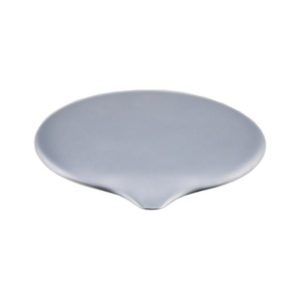
Reasons and Solutions of air bubble in Die Casting parts
Zinc die casting is a kind of casting which fills the mould cavity with zinc liquid rapidly and high pressure. The filling time of zinc liquid in die casting model cavity is very short, usually several hundredths of seconds or thousandths of seconds. The pore formed in the die casting process has smooth surface, and its shape is mostly round or elliptical. It mostly exists on the surface or subcutaneous pore of the castings, and may also be inside the castings. The main source of pore is the gas involved in the die casting process or the gas evolution from liquid zinc.
First, the entrainment in the die casting process.
1. Die casting machine now basically adopts three-stage injection. When one-stage injection, the injection punch advances at a slower speed (usually less than 0.3m/s), which is conducive to extruding the gas in the chamber. The second-stage injection is to press the structure of the castings, select the appropriate flow velocity of the wall thickness, and the speed of the inner gate is extremely fast (generally the speed of the punch is 1-6m/s, thin). Wall parts, high gas tightness parts and magnesium alloy parts may reach a speed of more than 8m/s, and zinc liquid will basically fill the cavity. The first stage is the key to the formation of voids in die castings. The higher the speed, the easier the eddy current to form voids. In this process, controlling the blowhole of die castings is mainly realized by controlling the first and second injection velocities and the first and second switching points. First, the second-stage velocity is as low as possible (but too low will affect the casting forming or surface quality, depending on the actual situation); the starting point of the second-stage injection can be selected after the parts with no casting porosity are allowed, different starting points can be selected for different castings. At the same time, with the continuous improvement and perfection of the working performance of the die casting machine, such as injection speed, pressurization time and speed-up time, the porosity of the casting will be less and less.
2. A good die-casting die should have a good gating system and overflow system. In the process of die casting, we should try our best to keep the direction of multi-strand runner, zinc liquid flow and castings in the same direction, avoid collision with each other to produce eddy current and entrainment caused by filling chaos; in addition, we should pay attention to filling multi-strand runner filling cavity at the same time, so that one or several strands of zinc liquid can not return to the dead corner at the back to produce eddy current. The distribution of slag collecting ladle and exhaust duct on die casting die should be reasonable.
3. Temperature of die casting die also has a key influence on the quality of castings and porosity. When the mould temperature is too high, the release agent volatilizes at high temperature and can not form a dense skin film, which is easy to cause mucous membrane. When the mould temperature is too low, the skin film formed by the release agent has non-volatile water, which makes the demoulding effect poor and leads to the casting pore. Usually the preheating temperature of the die is 150 ~180 C, and the working temperature is 220 ~280 C.
4. Gases from Coatings
A. First of all, the performance of the coating: too high volatilization point and large gas emission have a direct impact on the porosity of the casting.
B. From the point of view of spraying technology: too much spraying use, too long spraying time, easy to cause gas volatilization, but also make the surface temperature of the die too low, the surface of the die can not evaporate for a while, after closing the die cavity produces a lot of gas. In the production process, we need to select coatings with good performance, low volatilization point and low gas production.
5. Because die casting is characterized by filling the cavity at a fast speed, and the liquid zinc solidifies rapidly in the mould to form products, there will be air holes in the casting caused by the liquid zinc entrainment. But the surface of castings will also form compact layers of fine grains due to rapid solidification. These fine grains have high mechanical properties. As long as the processing allowance of castings is as small as possible, the physical properties of castings can also be guaranteed. Excessive machining allowance will remove the surface dense layer, which will lead to the internal pore exposure and the physical properties of the castings will be reduced.






